Friendly Power
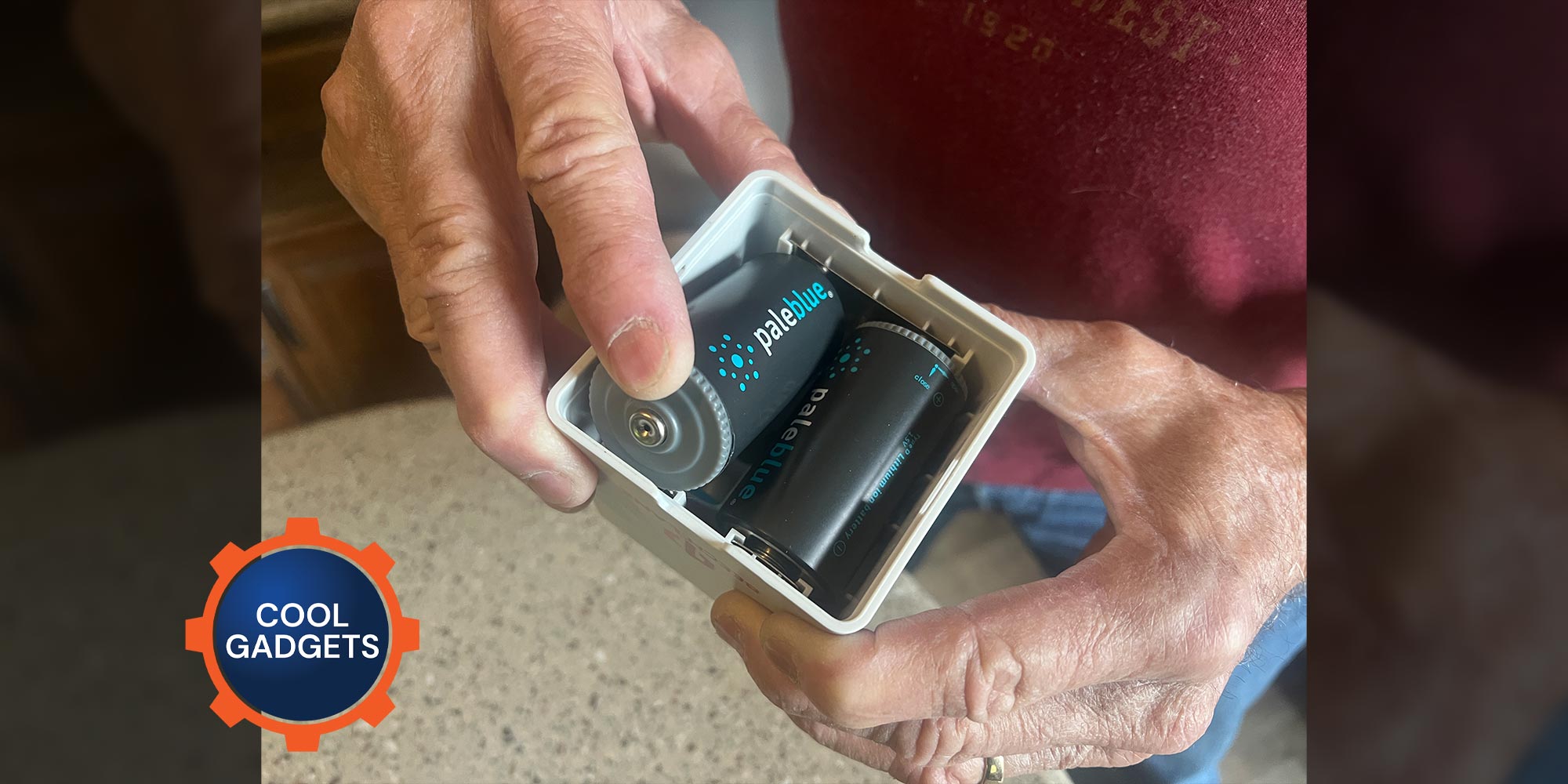
At today’s prices, buying quality batteries can get expensive — even when purchased online or at discount centers. And dead batteries usually end up in landfills. Beyond the problem with voltage loss from self-discharging, some brands of alkaline batteries also have a propensity to leak and corrode (think damage) the terminals in your device, especially flashlights that may be dormant for long periods of time.
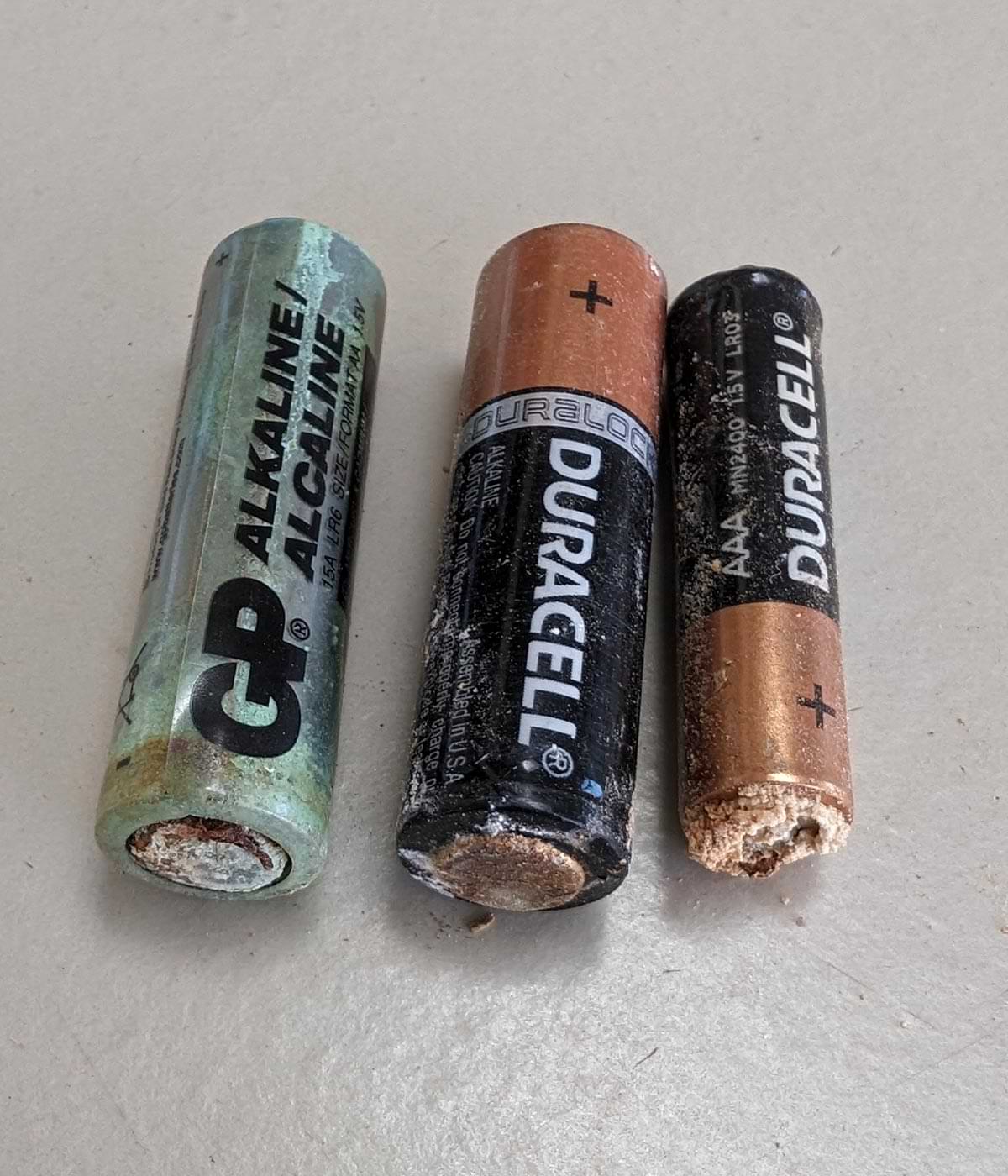
Alkaline batteries that are loaded into devices that stay dormant for a while have a tendency to leak and produce corrosion. Once this happens, the terminals also corrode and, in most cases, the device is headed for the trash can. I have discarded perfectly good devices — including flashlights — prematurely after the batteries leaked. Disposable lithium batteries (not shown) don’t have that problem, but they are expensive.
One of the big advantages of lithium batteries is their ability to hold the rated voltage for a longer period of time than a NiMH rechargeable battery and can handle deeper discharge sessions. It’s the same feature that has made lithium RV house batteries so popular. Even so, I’ve always been a little queasy about using cheap (unknown brand) rechargeable lithium batteries because of all the stories circulating out there about overheating and causing fires and other problems.
After extensive research, I landed on rechargeable lithium batteries made by Pale Blue Earth. The company markets paleblue-branded batteries in AA, AAA, C, D, 9-volt and even CR123A sizes and produces high-quality products assembled in the USA. These batteries feel and look good and even come packaged in a reusable plastic travel case, which is also perfect for storing. A big selling point is the higher capacity — said to be twice to three times that of common comparable brands and the ability to last through 1,000 charging cycles — touted as the result of a new design with 48% more capacity.
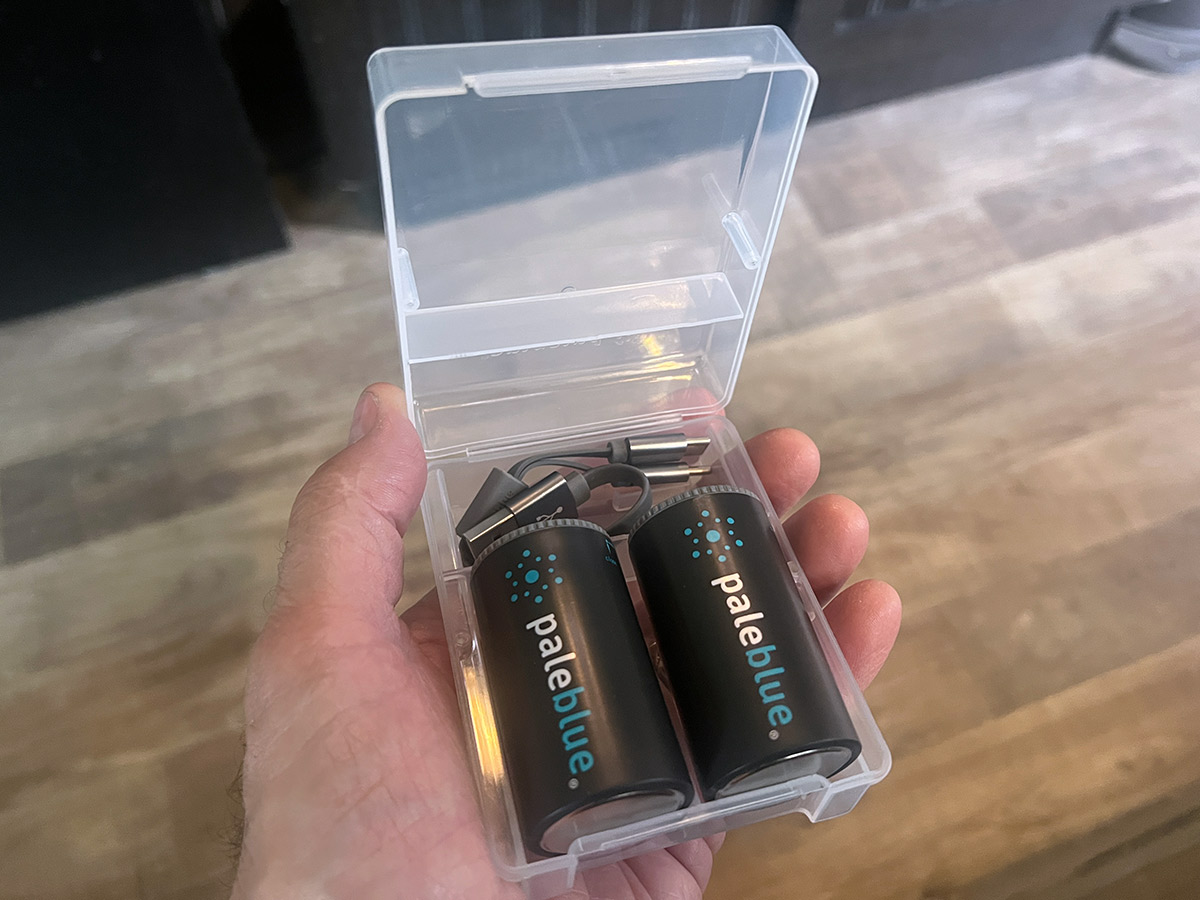
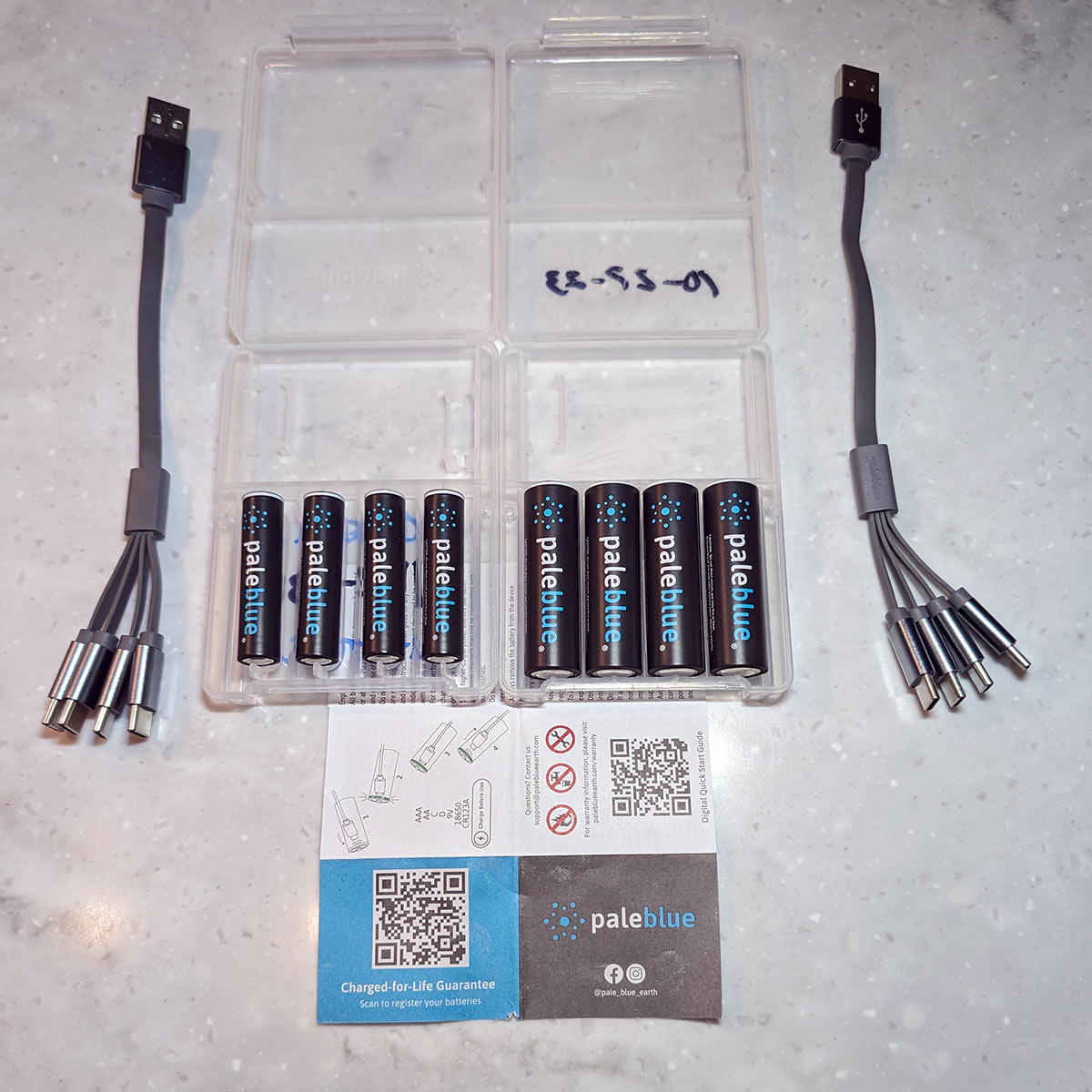
After running the fan for a number of months, we found that the Pale Blue Earth rechargeable batteries lasted a bit longer than their alkaline counterparts, so the cold environment in the refrigerator had no effect on longevity. And when they did lose power, it took about seven hours to fully recharge the D-cell batteries via the provided cable (and just an hour or so for the AA and AAA batteries).
Uniquely, the top of the D battery pops up to reveal a USB-C receptacle and there’s a green indicator LED, which flashes during the recharging process. The charging cable has two leads and plugs into one power source, making it possible to charge both batteries at the same time. For the smaller AA and AAA batteries, the USB-C port is in the side and there’s a ring light at the top to indicate the charging process.
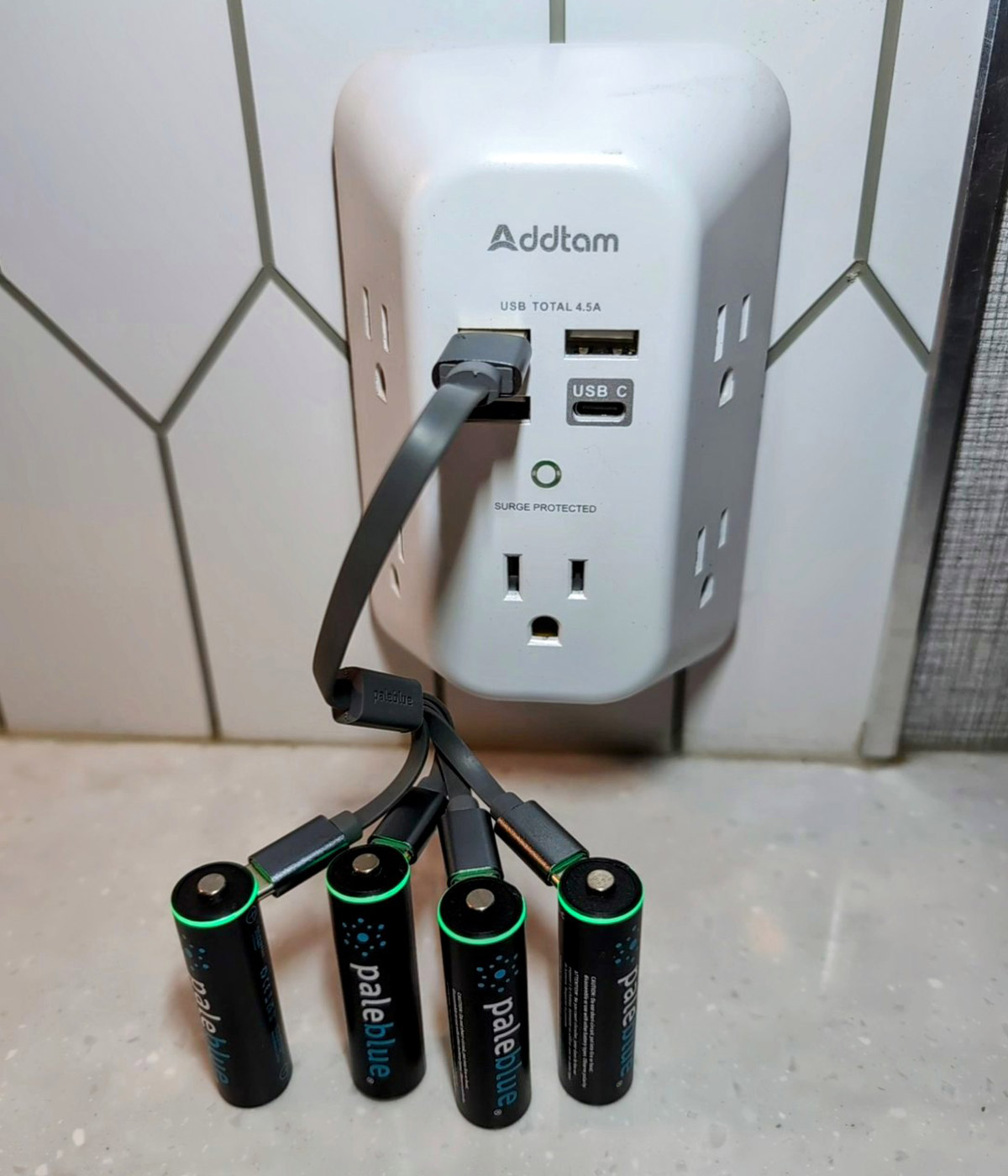
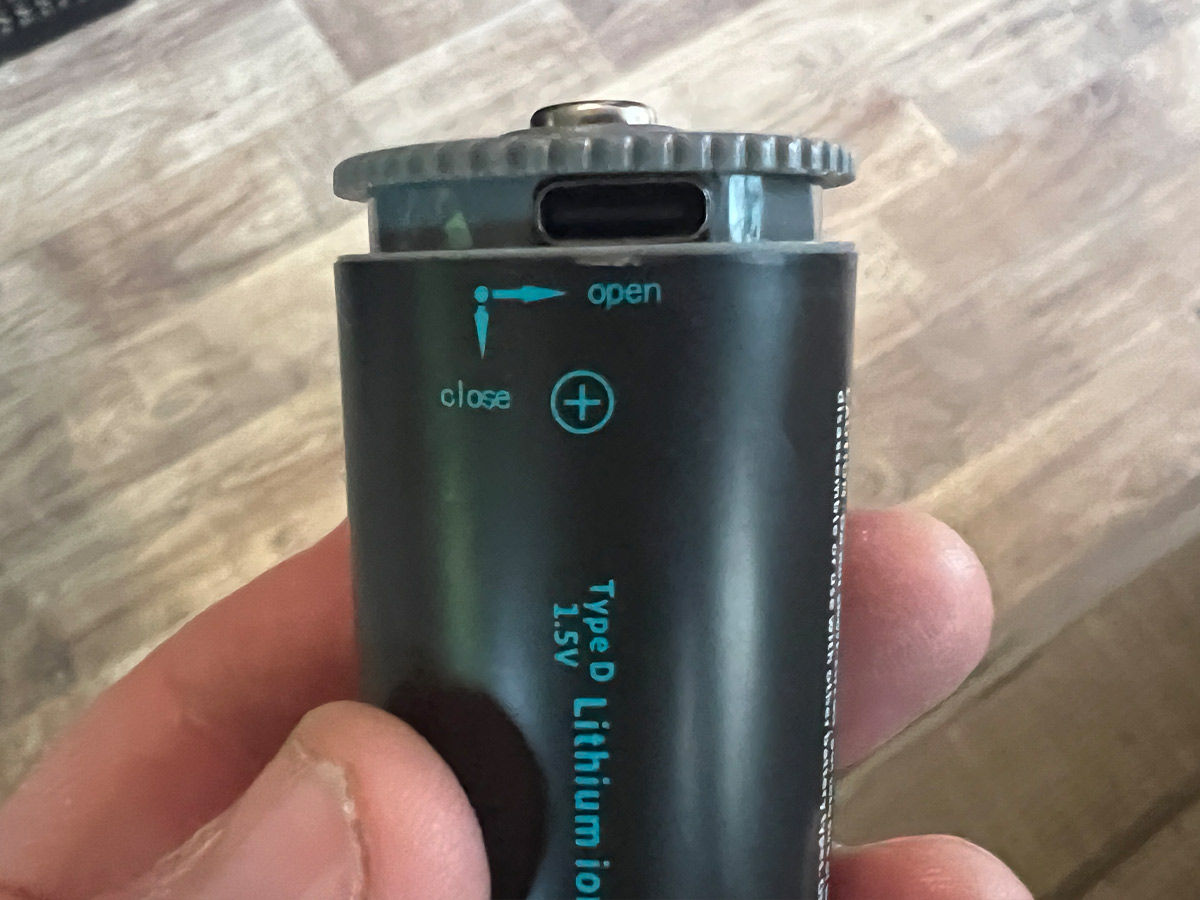
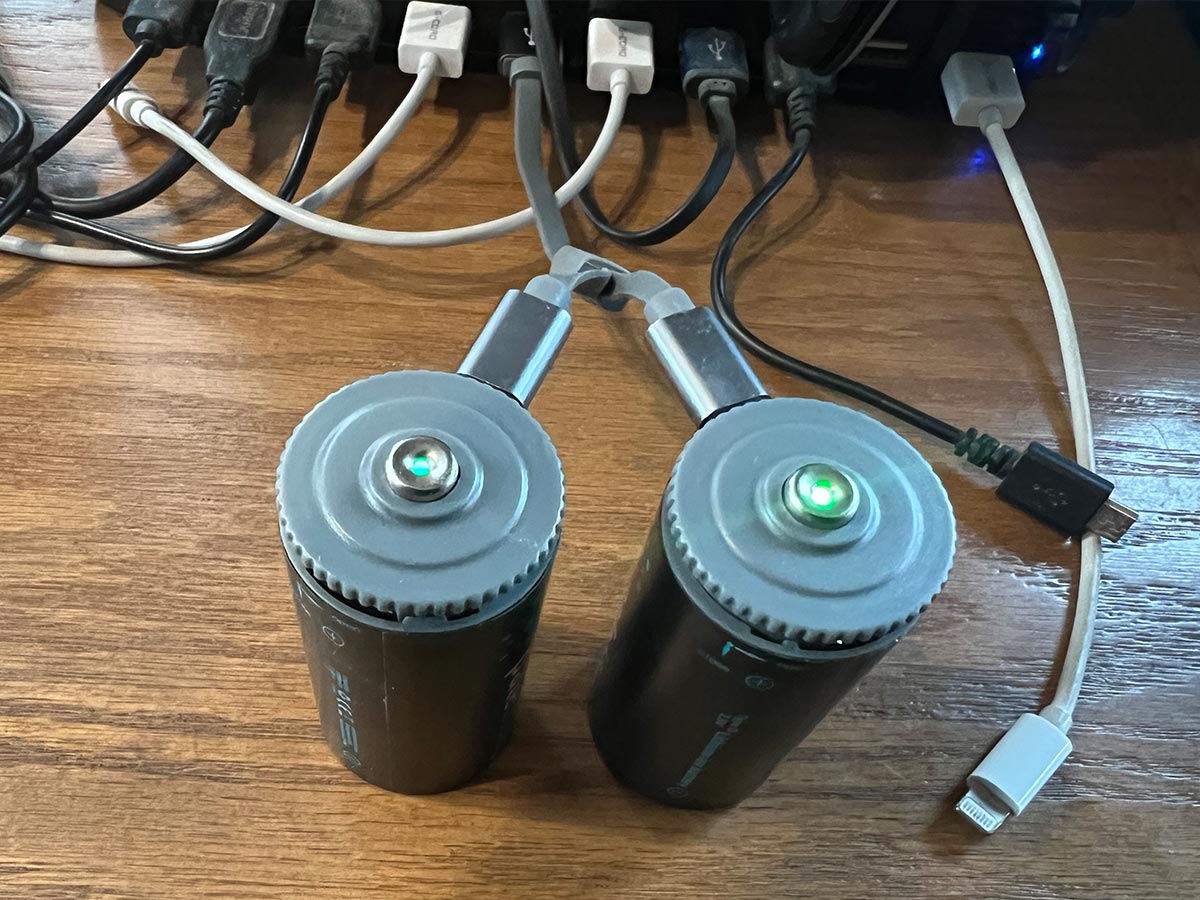
As for the safe lock that warns against using rechargeable batteries, well, it’s working fine. These batteries should last for 12 months in the safe lock; devices that are used more frequently will have shorter discharging/charging cycles.
To put the use of paleblue batteries into perspective: You’ll be keeping 1,000 dead batteries out of landfills for the price of one lithium of any size — while saving a ton of money.
Already a Subscriber? Click here for Access to the Full Issues.


